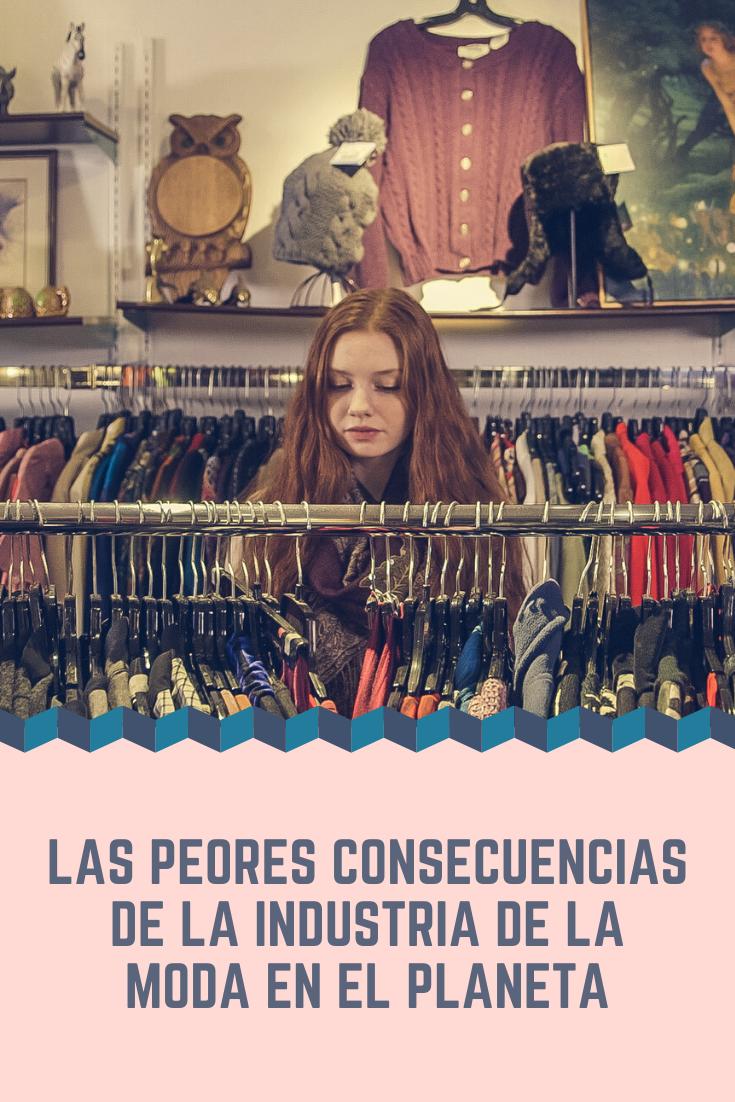The fashion industry emits more carbon than international flights and maritime transport combined: these are its biggest consequences on the planet
It is already known that some things in modern life, such as international flights, the use of plastics or even driving to work, for example, have an environmental impact. But when it comes to clothing, its impact is less obvious.
As consumers around the world buy more clothes, the growing market for cheap items and new styles is affecting the planet. On average, people bought 60% more clothing in 2014 than they did in 2000. Fashion products account for 10% of the world's carbon emissions, but this industry dries up water resources and pollutes rivers and streams .
What's more, 85% of textiles go to landfill each year. And washing certain types of clothing sends thousands of microplastics into the ocean.
Here you can see the most significant consequences that the fashion industry has on the planet.
Clothing production has almost doubled since 2000
REUTERS/Mansi Thapliyal
Source:McKinsey & Company
While consumers bought 60% more clothes in 2014 than in 2000, they only kept the clothes half the time.
REUTERS/Khalid al-Mousily
Source: McKinsey & Company, Ellen MacArthur Foundation
In Europe, fashion companies went from an average offer of two collections per year in 2000 to five in 2011.
AP Photo/Luca Bruno
Source: European Parliament
Some brands offer even more. Zara puts out 24 collections a year, while H&M offers between 12 and 16.
Business Insider/Mary Hanbury
Source: European Parliament
Many of these garments end up in the landfill. The equivalent of a garbage truck full of clothing is burned or thrown into a landfill every second.

REUTERS/Mohamed Azakir
Source: United Nations Environment Program (UNEP)
In total, almost 85% of clothing goes to landfill each year. It's enough to fill Sydney Harbor every year.
REUTERS/David Gray
Source: United Nations Economic Commission for Europe (UNECE), World Resources Institute (WRI)
Washing your clothes sends up to 500,000 tons of microfibers into the ocean every year, the equivalent of 50,000 plastic bottles.
Jamie McDonald/Getty
Source: UNEP, Ellen MacArthur Foundation
Many of these fibers are polyester, a plastic found in 60% of clothing. Polyester manufacturing produces two to three times more carbon than cotton, and polyester does not break down in the ocean.
REUTERS/Vasily Fedosenko
Source: Greenpeace, WRI
A 2017 report by the International Union for Conservation of Nature (IUCN) estimated that 35% of microplastics, small pieces of plastic that do not break down, in the ocean come from the washing of synthetic textiles such as polyester.
Cheryl Ravelo/Reuters
Source: IUCN
After all, microplastics are estimated to make up 31% of plastic pollution in the ocean.
Reuters
Source: IUCN
The fashion industry is responsible for 10% of humanity's carbon emissions.
Stringer / Reuters
Source:UNEP
This implies more emissions than international flights and maritime transport combined.
REUTERS/Tim Chong
Source:UNEP
If the fashion sector continues on this trajectory, this share of carbon could be 26% by 2050, according to a 2017 report from the Ellen MacArthur Foundation.
Reuters/Mark Blinch
Source: Ellen MacArthur Foundation
The fashion industry is also the second largest consumer of water in the world.
REUTERS/P. Ravikumar/File Photo
Source:UNECE
More than 2,600 liters of water are needed to produce a cotton jersey. This is enough water for a person to drink at least 8 glasses of water a day for three and a half years.
REUTERS/Francois Lenoir
Source:WRI
More than 7,500 liters of water are needed to produce a pair of trousers. It is more than enough for a person to drink eight glasses of water a day for ten years.
Shoshy Ciment/Business Insider
Source:UNEP
This is because both the pants and the sweater are made from a water-intensive plant: cotton.
REUTERS/Luc Gnago
In Uzbekistan, for example, cotton farming consumed so much water from the Aral Sea that it dried up after 50 years. Once one of the four largest lakes in the world, the Aral Sea is now little more than a desert and some small ponds
POT
Source: Business Insider
Fashion also causes pollution problems in the water. Textile dyeing is the second largest source of water pollution, as it is often discharged into streams, ditches or rivers.
REUTERS/Jayanta Dey
Source: UNEP, The New York Times, The Guardian
The process of dyeing fabrics uses enough water to fill two million Olympic swimming pools each year.
REUTERS/Raffiquar Rahman
Source:WRI
All in all, the fashion industry is responsible for 20% of all industrial water pollution worldwide.
REUTERS/Andrew Biraj (Bangladesh Environment Society)
Source: WRI,UNEP
Some retail companies are beginning to counter these trends with initiatives to reduce textile pollution and grow cotton sustainably. In March, the UN launched the Alliance for Sustainable Fashion, which coordinates the efforts of various agencies to make the industry less polluting.
Getty Images/Don Arnold
Source: Zero Discharge of Hazardous Chemicals, Better Cotton Initiative, UNEP










Related Articles